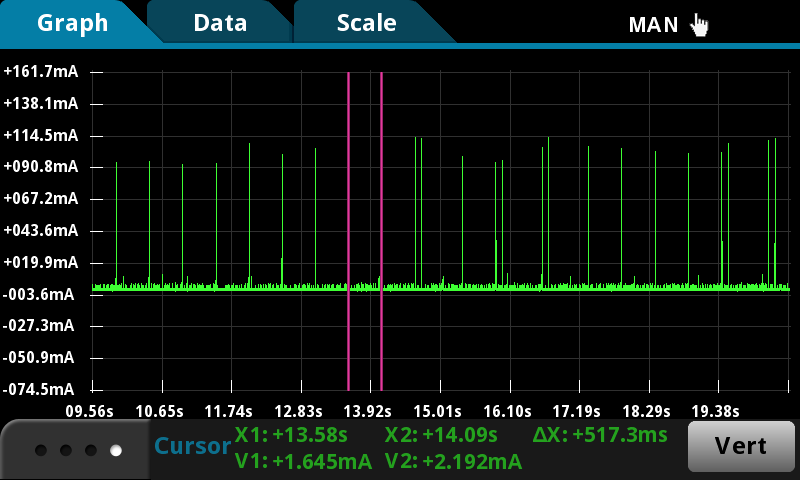Hi support,
We are trying to understand the impact of LSI on current consumption.
See the attached screenshots. Our AP is set to DTIM 1. We set the LSI to 520ms, and let the CC32 enter lpds. At this point, we have a connected idle environment, with one socket open.
Usually, we see around ~510ms between each NWP wakeup (as expected, to service a beacon).
Zoomed in of the above screen shot.
However, sometimes we see extra beacon wakeups. See the below screenshot.
These appear to be at the beacon interval ~100ms. Why is the NWP waking up more often than expected? Sometimes we can see up to 4 extra beacon wakeups in every 500ms period. The impact of these extra wakeups is causing our current consumption to be ~30% higher than expected.
Thanks!












